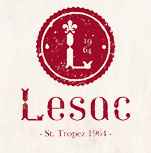Good morning everyone. We are just about to start the month of April and we hope everybody is safe and healthy and coping with the quarantine to the best of their ability.
Videogame developers can reproduce athlete’s tattoos
For all you non-gamers, Take Two Interactive is the company behind “NBA 2K”, a basketball, cross-platform game where all NBA players are represented. Because they want characters to look like their real living counterpart, Take Two also represents the NBA’s athlete's tattoos. Now, this didn’t sit too well with Solid Oak Sketches who owns 8 tattoo designs created by 3 artists: four on LeBron James’ arm (a child portrait, the words “On My Own,” a “330” area code and a script with scrolls, clouds, and doves); a crown with butterflies on Kobe Bryant’s bicep, a wizard on Kenyon Martin’s shoulder, a script with a scroll on DeAndre Jordan’s shoulder and a basketball with stars and script on Eric Bledsoe’s shoulder. Solid Oak considered that by publicly displaying these distinctive tattoos, Take Two was infringing its Copyright.
Now, a Manhattan federal judge has ruled in favour of Take Two by establishing that there is no copyright infringement, mainly due to fair use and the fact that the tattoos are not the most important part of the game (being blurred most of the time or not even visible when other players are blocking them). In addition, the tattoo artists always knew that these tattoos they draw on NBA stars would appear in public, on television, in commercials, or in other forms of media, like video games.
Hence, NBA players are free to use their likeness however they wanted. This entails that when the players concerned (Bryant, James, Martin, Jordan, and Bledsoe) gave the NBA and Take-Two permission to accurately portray them in video games, they also give them permission to reproduce their tattoos.
BMW defending its trade mark in India
BMW sued DMW (an Indian car manufacturer) before the courts of New Delhi for trademark infringement and for taking advantage of its reputation and goodwill. DMW tried to argue that the company had been operating since 2013 and BMW waited until 2017 to file a lawsuit. However, the judge considered the delay to be non-relevant in this case.
BMW has been producing motorcycles since 1923 and cars since 1928. In addition, the company has an undeniable international presence (with assembly plants in 14 countries, global sales network in more than 140 nations…). In these circumstances, the use of ‘DMW’ by the Indian company appears to be a dishonest act with an intention of trying to take advantage of the reputation and goodwill of BMW and will more likely mislead the average consumer.
Further, the visual and phonetical similarity to the mark of BMW, which is a well-known trademark constitutes infringement under the Indian Trade mark Act.
As a consequence, BMW has been able to secure an injunction that will restrain DMW to manufacture, export, import or offer for sale or advertise cars bearing the mark DMW.
Armani cannot register “Le Sac” as an EUTM
Armani filed an application for an EUTM that depicted three elements: the stylised verbal element “Le Sac”, above it in a smaller verbal element “Giorgio Armani” and below it the number 11, written in even smaller characters. The owner of the earlier Spanish word and figurative marks “Le Sac” filed an opposition against said application.
The opposition was upheld and then appealed by Armani, appeal that was dismissed in April 2018 based on the fact that, although the marks at issue were not conceptually similar, they were visually and phonetically similar on average and there is a likelihood of confusion between the marks at issue.

|

|
The General Court of the EU has now confirmed this decision stated that there is an average degree of visual and phonetic similarity between the signs at issue, since the element ‘le sac’ is partially identical in the marks at issue.
Armani tried to argue that the word element “Giorgio Armani” was the most distinctive and therefore dominant element of the mark applied for because of its fame. Although it is true that if an element is itself a well-known mark in a composite mark (such as it is the case here), it may play a more important role. However, this does not mean that the comparison between the signs should only take into account that element, when here “Le Sac” is also visually important for the overall impression and has average distinctiveness.
In conclusion, due to an earlier national trade mark, Armani cannot register “Le Sac” as an EUTM.
This is all for today! Please, stay tuned for our monthly article and be safe.
Additional readings:
- How big brands are making “social distancing” logos - https://edition.cnn.com/2020/03/26/business/social-distancing-brand-logos-coronavirus/index.html?utm_content=2020-03-29T14%3A01%3A06&utm_source=twCNN&utm_medium=social&utm_term=link
- Buyers beware: counterfeit markets flourish during global health crisis – The Fashion Law - https://www.thefashionlaw.com/buyer-beware-counterfeit-markets-flourish-during-global-health-crises/
Details
- Publication date
- 31 March 2020
- Author
- Executive Agency for Small and Medium-sized Enterprises
